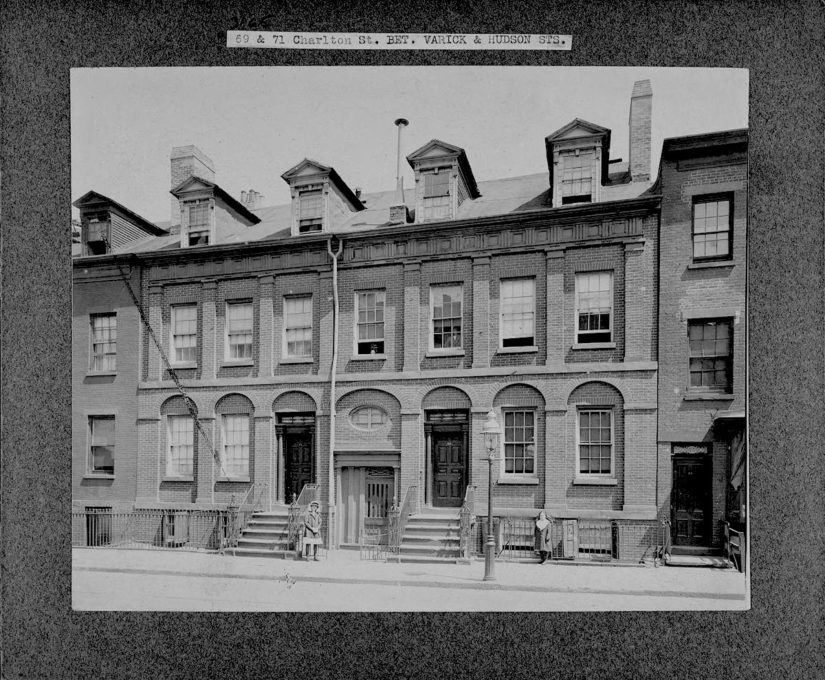
Frank Cousins
Frank Cousins worked with the Art Commission of the City of New York in 1913 to photograph buildings of historical and architectural interest.
Frank Cousins was born in Salem, Massachusetts, and began a career in photographing historic houses around his hometown.1&2 He is credited with making architectural photography into a specialty discipline. He photographed colonial architecture, as well as decorative elements that he found aesthetically rich on other types of structures. About 15,000 of Cousins’s photographs are on file today in the offices of architects. His photographs were collected by the Metropolitan Museum of Art, which owns about 700 of his prints. Dr. Peter Jessen of the industrial Art Commission of Berlin at one tme owned about 600, and J. Pierpont Morgan once owned about 400.3
Frank Cousins considered New York City’s colonial architecture inferior to Salem’s. He co-authored The Colonial Architecture of Salem (Dover Publications: 2000) with Phil M. Riley.4
In 1913, the New York City Art Commission, the charter mandated agency charged with reviewing public art and the design of certain structures on city-owned land, took a step toward developing a list of important sites.5 The Commission hired Frank Cousins to photograph "50 old buildings of historical as well as architectural interest." The buildings were selected "not only because of their interesting character and history, but a number of them, because of their liability to be torn down soon."6
The Art Commission began photographing landmarks following a great deal of agitation over the loss of St. John’s Chapel.7 By the second decade of the 20th century, the Art Commission faced the realization that many landmarks were being destroyed, and hired Cousins to perform this early effort in documentation. The Commission's objective was to ensure that future generations could at least have access to these structures in picture form.8
- The Frank Cousins Photographs of New York City Collection
Peabody Essex Museum
East India Square
Salem, MA 01970
Tel: (978) 745-9500
Fax: (978) 744-6776
www.pem.org - New York City Art Commission Archives
City Hall, Third Floor
New York, NY 10007
Phone: (212) 788-3071
Fax: (212) 788-3086
- Anthony C. Wood, Preserving New York: Winning the Right to Protect A City’s Landmarks (New York: Routledge, 2008), page 34.
- ”The Camera to Preserve New York’s Old Buildings,” The New York Times, 10 May 1914.
- ”Plan to Preserve by Photograph New York’s Landmarks,” New York Sun, 29 June 1913.
- Frank Cousins and Phil M. Riley, The Colonial Architecture of Salem (Mineola: Dover Publications: 2000).
- Anthony C. Wood, Preserving New York: Winning the Right to Protect A City’s Landmarks (New York: Routledge, 2008), page 34.
- Art Commission of the City of New York, Annual Report, 1913.
- ”Plan to Preserve by Photograph New York’s Landmarks,” New York Sun, 29 June 1913.
- ”The Camera to Preserve New York’s Old Buildings,” The New York Times, 10 May 1914.